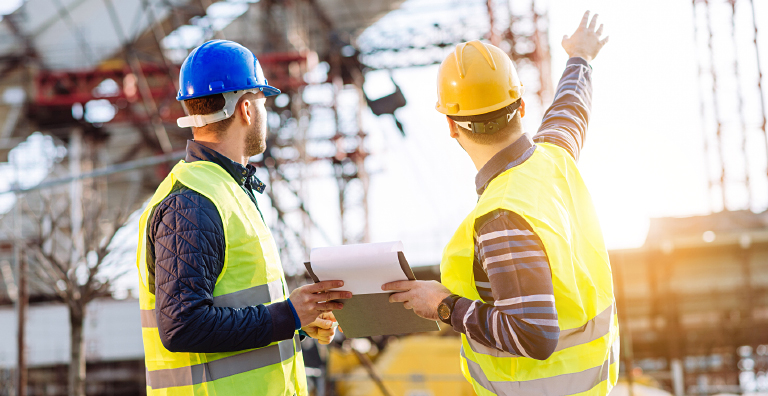Checklist: Is My Construction Environment Compliant?
Adhering to construction compliance regulations ensures safety, efficiency, and accountability on job sites. Without it, projects face risks like delays, legal penalties and safety hazards. Use this checklist to assess your site’s compliance and discover how RFID technology simplifies processes for safer, more efficient operations.
The construction industry operates under a growing number of stringent regulations designed to prioritize safety, efficiency and accountability. Laws such as the U.K.’s Building Safety Act reflect an intensified focus on ensuring compliance at every stage of a project, from material sourcing to worker safety protocols.
For construction managers, maintaining compliance isn’t just about avoiding penalties or delays — it’s about protecting lives, upholding structural integrity and maintaining trust among stakeholders and the public. As projects become more complex, traditional methods of managing compliance can fall short, leaving room for error and inefficiency.
This is where RFID comes in. RFID technology enhances compliance and data accuracy by assigning digital identities to physical elements such as construction materials, equipment and safety components. It is uniquely suited to preserving critical item-level information essential for building materials and safety measures throughout the construction process. By enabling real-time tracking, management, and documentation of key compliance data, RFID helps create a safer, more efficient work environment.
Use this checklist to evaluate your construction site's compliance with regulatory standards and discover how RFID can simplify processes across three key areas of construction compliance.
1. Building Materials Compliance & Quality Assurance
Ensuring building materials meet compliance and quality assurance standards is critical to the success and safety of any construction project. For example, tragic incidents, such as the Grenfell Tower fire in London, underscore the devastating consequences of using substandard or substitute materials. On the other hand, in projects like school construction, ensuring the use of fire-resistant materials and safety elements like fire doors, non-toxic finishes, and structural integrity is essential to safeguard the well-being of students and staff. Whether it’s a high-rise development, a school, or any other type of building, compliance with material standards is crucial for protecting lives and ensuring the overall safety of the structure.
To ensure your construction environment is safe, you should:
Real-Life Scenario
Imagine a construction project where concrete is essential for the foundation. Each batch is tagged with an RFID containing key info like batch number, supplier and quality certifications.
As the concrete arrives on-site, the team scans the RFID to verify it meets strength standards. All without requiring line of sight, if any discrepancies are found, the batch is rejected or replaced immediately, ensuring compliance and preventing delays, while maintaining quality and safety from supplier to installation.
2. Safety Equipment Compliance & Monitoring
Ensuring that safety equipment is compliant with regulations is crucial for protecting workers and maintaining a safe construction environment.
Real-Life Scenario
To ensure worker safety, each piece of PPE on a construction site is tagged with an RFID chip that tracks its condition and expiration. Before starting work, equipment is scanned to verify compliance. If a helmet is nearing expiration and suffers an impact that may affect its condition, the system will relay the information to the supervisor, and the worker is promptly provided with a new helmet, ensuring continuous safety and compliance without delays.
3. Worker Safety & Environmental Compliance
Worker safety is crucial on any construction site, especially when it comes to managing hazardous tools and high-risk equipment. By leveraging RFID for real-time tracking and detailed logs, construction managers can maintain a safer environment and ensure full compliance with safety regulations.
Real-Life Scenario
Before a crane begins lifting materials, the project manager scans its RFID tag during the daily check. An alert reveals that the crane hasn’t passed its recent inspection. The manager halts operations for an immediate inspection, discovering a minor issue that could have caused a breakdown. Thanks to RFID, the crane is only used once it’s confirmed to be safe, ensuring site safety.
Conclusion
Compliance is at the heart of every successful construction project, ensuring that safety, efficiency and accountability are maintained at all times. For construction managers looking to enhance compliance efforts, improve site safety and ensure smooth operations, leveraging RFID technology is the way forward.
Take the first step toward a safer, more compliant construction site. Contact HID today.
